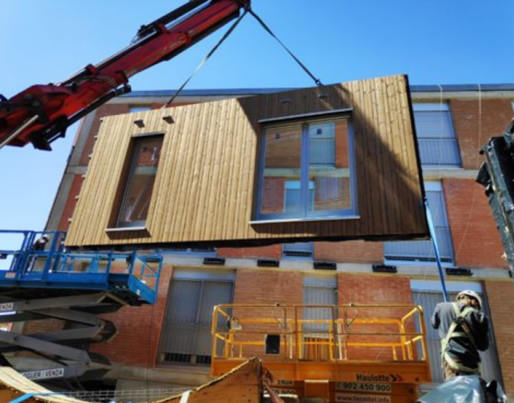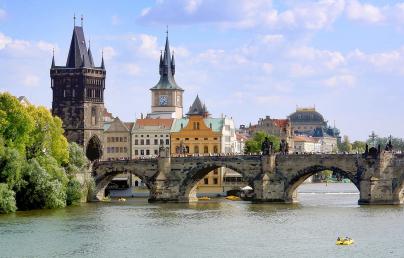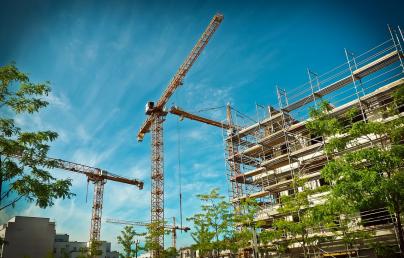OVERVIEW ARTICLE - Overcoming the main barriers to the uptake of building retrofit through an industrialised approach

OVERVIEW ARTICLE - Overcoming the main barriers to the uptake of building retrofit through an industrialised approach
Author: Riccardo Pinotti (Post-Doc Researcher, Eurac Research)
The Renovation Wave strategy highlighted how industrialisation can trigger a virtuous cycle between a higher demand for deeper building renovation and falling costs for smarter and more sustainable products (European Commission, COM/2020/662).
This article discusses the market uptake of the industrialised solutions for building retrofit, highlighting the main barriers and perspectives, and trying to understand how digitalisation and industrialisation can accelerate the rate of deep renovation within the building sector. Furthermore, the effectiveness of these approaches will be evaluated, and how when coupled with new market solutions to make the renovation process as successful and appealing as possible, these can be exploited to meet decarbonisation and sustainability goals defined by the European Commission by 2050.
Prefabricated envelopes for building retrofit
During the first decade of the 2000’s, several projects dealing with prefabricated envelopes for building retrofit provided valuable technological results in Europe. A representative list of projects can be found in (D'Oca, et al., 2018). A peculiar aspect of such façade retrofit technology is that it can host functional components, such as windows, mechanical ventilation units, hydronic ducts, PV modules and electric cables as has been proven by 4RinEU H2020 project, as well as in the more recent ongoing H2020 INFINITE project, and at the national level through studies performed by the ERDF (European Regional Development Fund) Legnattivo.
This renovation approach consists in renovating the building by working on the existing envelope from outside, thus anchoring it on prefabricated façade or roof modules. This approach allows for a quick installation phase, reducing the renovation works and reducing the whole deep renovation intervention in one fell swoop, hence also reducing disturbance for the occupants. At the same time, an improved quality control of the intervention is ensured because the modules are prefabricated in a controlled environment within the factory. When compared to a traditional retrofit intervention, the design phase is more time-consuming because it must be more accurate, since an exhaustive documentation describing the existing building is necessary in order to optimise the design and installation phases.
Despite the technological aspects of such an approach towards renovation have been examined and solved through many projects, there are still many barriers that hamper the necessary increase in the market uptake of these solutions. Nevertheless, some differences can be identified around Europe, where specific markets, thanks to the work done at EU and National level, are slightly more advanced.
These barriers are not related to specific technological problems, rather they mostly deal with deep renovation targets that are not easy to be reached in all contexts (e.g., historical buildings), their costs, and profitability in time.
The main barriers can be grouped by the following characteristics:
- Technical barriers, mainly dealing with limited standardised solutions and expertise available on the market. This shortage is influenced by other factors present on the market.
- Financial barriers, consisting of high investment costs, as well as long payback time considering the whole lifecycle, and lack of long-term warranties on the envelope products.
- Social barriers, such as a difficult bureaucracy related to the whole renovation process as well as the financing and funding requests and management.
Building owners and designers tend to lack the required awareness, commitment, and management skills in properly organising the industrialised design process. In general, building owners seem to be in favour of deep renovation towards nZEB, but they are not motivated by the excessive investment costs and long pay-back time for retrofitting interventions (D'Oca, et al., 2018).
Therefore, designers and technology providers have a challenge to develop nZEB deep renovation in such a way that it is not significantly more expensive than standard major renovation, in particular referring to the whole lifespan of the building.
Reducing the renovation time on building site: demo cases
Indeed, from previous experiences, prefabricated multifunctional timber façade approach, combined with a remarkable design phase assisted by BIM methodology, can drastically reduce the renovation time needed on building site, thus making the renovation more attractive.
For instance, demo cases operations in 4RinEU Project demonstrated this aspect:
- the Norwegian demo took less than 2 months for completing the deep renovation of eight small dwellings (including prefabricated roof)
- the Dutch demo took around one month to renovate 15 apartments.
- the Spanish demo took only half a month for the installation of prefabricated façade to cover around 210 m2 façade surface for the deep renovation of 10 apartments.
Furthermore, it has emerged from evaluation in all above-mentioned projects, that deep renovation interventions using an industrialised approach are comparable in terms of costs with standard approach retrofits. This is even more true when the comparison is extended to the end of the life cycle of the buildings. Due to the higher quality of the intervention which may be reached with the industrialised and prefabricated approach, the life cycle cost that has been calculated in different contexts in the analyses performed both in 4RinEU, INFINITE and Legnattivo is even lower respect to the one for a standard renovation. This occurs not only when the final benefits (e.g., related to energy consumptions and internal comfort) provided are the same, but also when the standard approach is compared to a deep retrofit providing higher final performances to the building.
Moreover, a higher level of industrialisation in the production and installation phases of such retrofit systems would certainly play a key role in lowering the overall costs of the interventions, resulting in a more attractive and reliable solution to achieve renovation. Hence, it seems that the barriers for an accelerated market uptake are not so much on a product level or technology level, but more on a process and institutional level.
Skepticism among demand-side actors
The potential of industrialisation in the building retrofit market is theoretically high, considering the huge European existing building stock. Nevertheless, the benefits of the industrialised renovation are still not clearly quantified, and the technical constraints imposed by them are still relevant. The demand-side stakeholders are still skeptical about adopting the prefabricated technologies because of the unclear cost-benefit balance.
The definition of a clear market is still not available; therefore, the large-scale adoption of these solutions is still wavering, impacting on the lack of a critical mass which is normally a key driver for unleashing the cost reduction of prefabrication.
It is a fact that the concept of modularity, industrialisation and digitalisation are transforming our society and worldwide economy. Digital transformation of the construction sector is progressing slowly due to the complexity of the sector itself and its whole value chain, but digitalisation represents an opportunity to overcome these limits, providing the means for a new approach to industrialisation guided by an interdisciplinary exchange of information.
This would give the possibility of connecting and unlocking proven modular deep-renovation technologies and concepts to meet the local market needs in a digital way, profiling product-market combinations and defining a new market for these modular deep-renovation products and concepts. This approach, based on the automation of the flows of information would foster productivity, flexibility of processes and logistics, and would open the road to new retrofitting market perspectives and business models.
The key perspective for industrialisation (defined as prefabrication, modularity and digitalisation) is in being appealing thanks to easier logistics (just-in-time delivery), limited transport (and the reduction of embedded energy), limited construction time at the project site (occupants can stay in their building), weather protected environment to assemble and install advanced installations and ICT hardware in the building components, and higher standardisation of all components within a district. Such key features are completely aligned with the principles of circular and zero-carbon society, hence opening further market-uptake potentials for the industrialised renovation.
To be as effective as possible, the diffusion of whole-house retrofit may require a business model innovation. For instance, a step beyond in this sense has been done by the ’Energiesprong’ business model, behaving as an innovative intermediary based around a highly innovative business model involving a net-zero energy performance contract, an integrated and industrialised supply chain, a single customer interface, a financial model based on the performance contract, and co-ordinated governance of these elements aided by the intermediary. In the Energiesprong model, customers are offered a comprehensive whole-house retrofit, based on guaranteed net-zero energy consumption.
The delivery of net-zero energy retrofit requires an integrated supply chain, typically with a single ‘solution provider’. The Energiesprong model is also driving a move to industrialisation and offsite manufacture with integrated energy modules (heat pump, ventilation unit, solar inverter) that can be miniaturised, and mass-produced. It is argued that this process innovation will drive down costs and installation times through economies of scale.
Over the coming years, most likely, the challenges arising from ambitious European Union and National standards to the building sector will strongly point to the topics mentioned in this article, pushing for the exploitation and capitalisation of the technology studies provided by last two decades’ projects, trying to define new business models based on digitalisation and guided by attractive financing systems and policies. This transition, together with the essential caution in the use of sustainable and user-centered solutions, will hopefully bring about a widespread use of industrialised solutions for retrofitting the European building stock soon.
Sources
D'Oca, S., Ferrante, A., Ferrer, C., Pernetti, R., Gralka, A., Sebastian, R., & Op 't Veld, P. (2018). Fiancial, and Social Barriers and Challenges in Deep Building Renovation: Integration of Lessons Learned from H2020 Cluster Projects. Buildings.
European Commission. (COM/2020/662). COMMUNICATION FROM THE COMMISSION: A Renovation Wave for Europe - greening our buildings, creating jobs, improving lives. Brussel.
Nye, M., Whitmarsh, L., & Foxon, T. (2010). Sociopsychological perspectives on the active roles of domestic actors in transition to a lower carbon electricity economy. Environment and Planning A.


